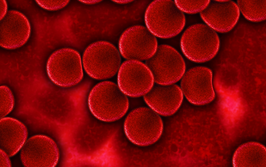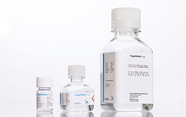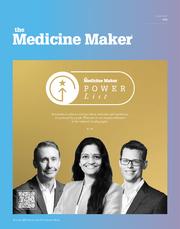Oral Alternatives for Injectable IV Medicines
Researchers say they have found a method that will allow some large molecules to be administered orally
Stephanie Vine | | 2 min read | News

UT Health San Antonio scientists believe that it could be possible to deliver complex medicines, including traditional intravenous treatments, orally. They have published a study explaining how a membrane receptor called CD36 could enhance uptake of large and complex drugs, such as proteolysis-targeting chimeras (PROTACs), into cells more efficiently. The discovery could also lead to new strategies to improve oral bioavailability.
PROTACs are a new class of drugs that target and degrade specific disease-causing proteins, but their large molecular weight (often over 800 Da) and high polarity makes them difficult to absorb through the gastrointestinal tract. While some PROTACs have shown surprising oral bioavailability, the reason behind this has been unclear until now.
The study found that CD36 plays a critical role in the uptake of PROTACs and other similarly complex molecules. Using biotinylated probes and advanced genetic techniques, the researchers demonstrated that CD36 binds to and mediates the entry of these large molecules into cells via an endocytic pathway. The finding could open up new pathways to improve the bioavailability of drugs that would otherwise struggle to penetrate cell membranes.
One of the key innovations in the study is a chemical endocytic medicinal chemistry strategy that enhances the binding of PROTACs to CD36. By optimizing the structural properties of the drugs to increase their interaction with CD36, the researchers were able to improve the potency and solubility of these molecules, enhancing their effectiveness in both in vitro and in vivo models. The researchers say the findings were completely unexpected.
“For decades, it was thought that molecules this large couldn’t cross membranes effectively, since the endocytic cellular uptake of chemicals was unknown. Through chemistry and biology, we identified CD36 as a protein for uptake and optimized chemicals better engaging with CD36 to internalize these drugs to more efficiently reach target proteins,” explained lead author Hong-yu Li. “As the research conclusion is so provocative, we verified the key results multiple times. The implications of this for drug discovery and development are enormous.”
In addition, the team analyzed tissue from prostate cancer patients and found that CD36 expression levels vary widely, which could explain why patients respond differently to some cancer medicines.
“By optimizing CD36 engagement through chemical endocytic medicinal chemistry, we may be able to target cancer and other diseases precisely through precision treatment based on the differential expression of CD36 in various tissues and different individuals,” Li added.
Looking forward, the team is also working to identify other cell receptors that could be targeted for chemical endocytosis. They noted that CD36 is highly expressed in tissues such as the intestine, brain, and skin, suggesting that this approach could potentially facilitate drug delivery across challenging barriers, such as the blood-brain barrier or the skin.
“In the next 10 to 20 years, this may become a foundational approach in drug discovery and a new research field within medicinal chemistry,” said Li. “We feel incredibly lucky to have made this discovery and opened the door to hope for previously untreatable diseases.”

Making great scientific magazines isn’t just about delivering knowledge and high quality content; it’s also about packaging these in the right words to ensure that someone is truly inspired by a topic. My passion is ensuring that our authors’ expertise is presented as a seamless and enjoyable reading experience, whether in print, in digital or on social media. I’ve spent fourteen years writing and editing features for scientific and manufacturing publications, and in making this content engaging and accessible without sacrificing its scientific integrity. There is nothing better than a magazine with great content that feels great to read.



















